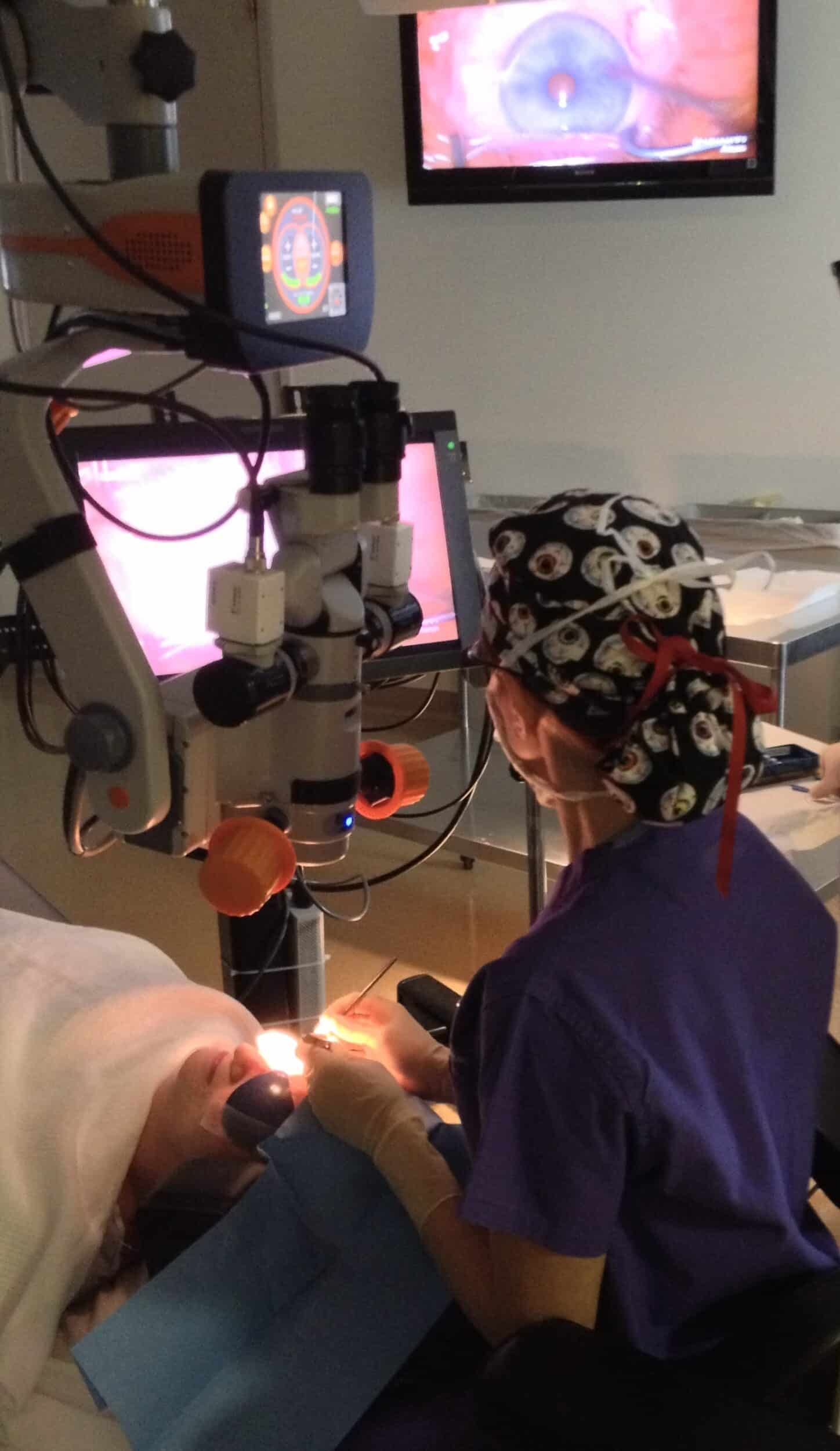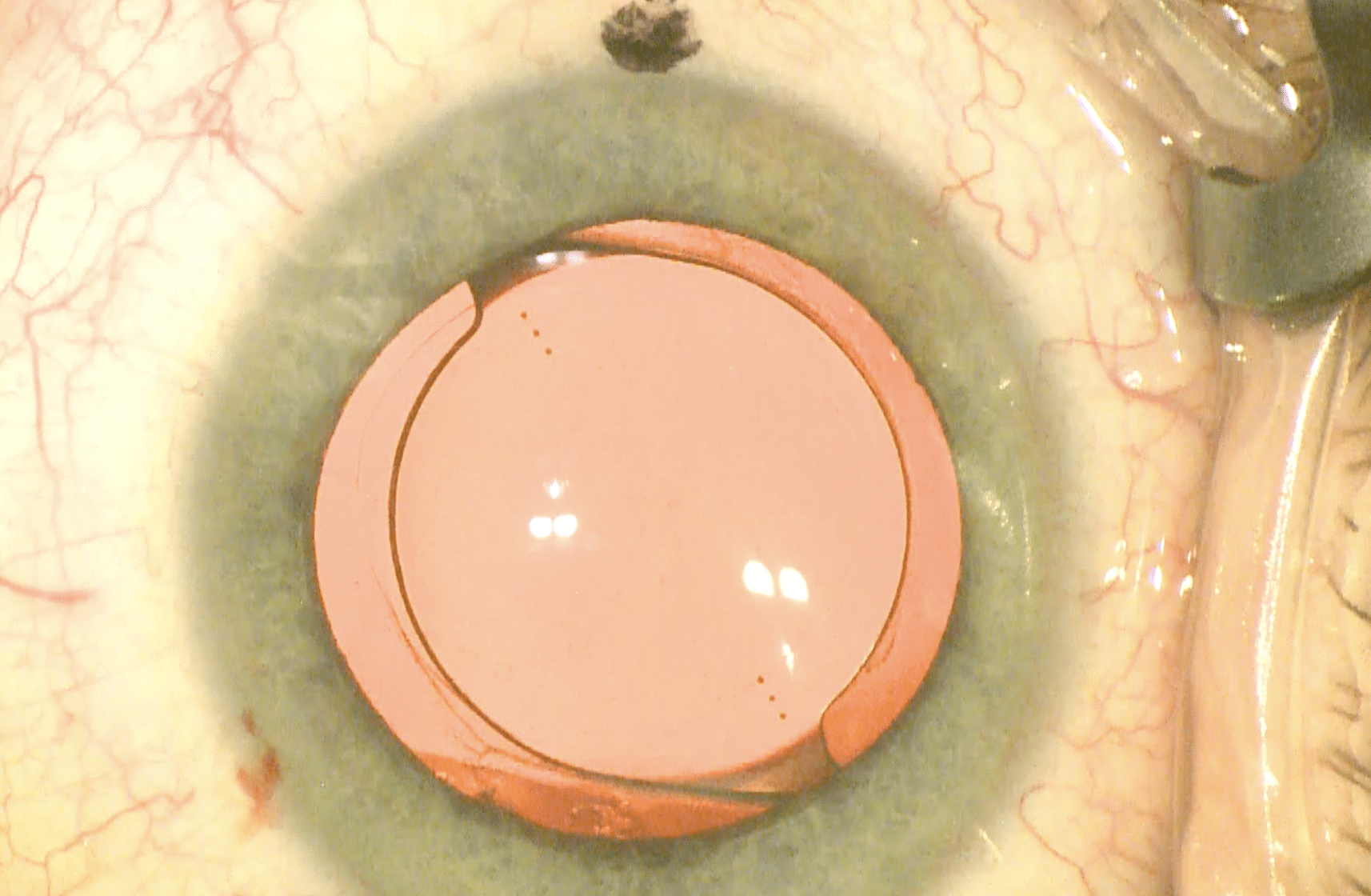Understanding Intraocular Lens (IOL) Options with Cataract Surgery

When you undergo cataract surgery, your natural lens which has become cloudy is replaced with a clear artificial lens called an intraocular lens (IOL). Choosing the right IOL depends on how you want to function after cataract surgery. Not all IOLs are a good option for every patient, so it is important to have a discussion with your surgeon about what options are best for you.
At Apex Vision, Dr. Wolsey knows what an important decision this is for the patient and wants to help you understand your best options.
Here's an overview of the different types of IOLs and what you need to know about them:
Conventional IOLs
Conventional or Monofocal IOLs are the most common type of lens used in cataract surgery. These lenses are designed to provide clear vision at a single distance: near, intermediate, or far. Choosing this option will give you great quality of vision but it does mean you will need still need glasses for some activities. For example, if you pick to have better distance vision, you will need glasses to do near activities like reading, sewing or seeing the computer.
Key Features of Monofocal IOLs:
- Sharp vision at a single distance
- Requires glasses for other distances
- Less glare/halos
- Better overall quality of vision
- Affordable option - these IOLs ARE COVERED BY YOUR INSURANCE.

Conventional IOLs can be used for Monovision
Monovision is a technique used to help people who have difficulty seeing both near and far (a condition called presbyopia). It involves correcting one eye for distance vision and the other for near vision. This allows your brain to rely on one eye for far-away tasks and the other for close-up tasks.
How it works:
- Dominant Eye for Distance: The dominant eye is usually corrected to focus on distant objects.
- Non-Dominant Eye for Near: The non-dominant eye is corrected to focus on closer objects like reading or using a smartphone.
- Brain Adaptation: Your brain learns to switch between the two eyes depending on the task at hand, which minimizes the need for bifocals or progressive lenses.
Benefits:
- Reduces dependency on glasses.
- Provides flexibility for daily activities.
- There is no extra cost for monovision unless you have astigmatism and need a Toric IOL.
Challenges:
- Some people may find it takes time to adjust.
- Depth perception may be slightly reduced.
- Not everyone’s brain adapts well to monovision.
- You may still need glasses for some activities.
Adjustment Period:
It's common to have an adjustment period of days to weeks with monovision as your brain adapts to processing different images from each eye.
Although you can see and function well with monovision, our eyes always see better when both eyes are focusing on the same thing. Some patients with monovision may want a pair of glasses for certain activities. Glasses could help when driving, especially at night, or seeing the guide on the TV across the room. On occasion, people who are doing fine near tasks may also benefit from a pair of prescription glasses. Although you may need glasses to help, you won’t be dependent on them to function.
If you’re considering monovision, your doctor might first test it with contact lenses to see how well it works for you before proceeding with a more permanent solution.
Astigmatism Correcting (Toric) IOLs
Toric IOLs are specifically designed for patients with astigmatism. Astigmatism means light is not focused to a point and you need correction with glasses, contact
lenses or your IOL to see things clearly. If you have astigmatism and want to see clearly without glasses, you will need a Toric IOL. Toric IOLs are a type of monofocal
lens meaning they will provide clear vision at a certain distance - distance, intermediate or near. These lenses are an additional cost.

Key Features of Toric IOLs:
- Corrects astigmatism
- Offers clearer vision at chosen distances
- Reduces dependency on glasses or contact lenses
- Increased cost - these IOLs ARE NOT COVERED BY YOUR INSURANCE
Multifocal IOLs

Multifocal IOLs are designed to provide clear vision at multiple distances, reducing or even eliminating the need for glasses. These lenses use advanced optical technology to split light into different focal points for near, intermediate, and far vision. These IOLs are good but may affect the overall quality of vision. Not everyone is a good candidate for multifocal IOLs. These are also more expensive and patients will have out of pocket costs with these lenses. There are multiple multifocal IOLs on the market. Dr. Wolsey can explain the options as well as the pros and cons of each IOL.
Key Features of Multifocal IOLs:
- Improved independence from glasses
- May cause glare or halos, especially at night
- Higher cost compared to monofocal lenses - INSURANCE DOES NOT COVER THE COST OF THESE IOLS
Extended Depth of Focus (EDOF) IOLs
EDOF IOLs can also reduce your need for glasses by offering a continuous range of vision, particularly for intermediate and far distances. These lenses provide a smoother transition between distances so may have less halos at night compared to multifocal IOLs. Although these IOLs can make you less dependent on glasses your near vision will not be as good compared to a multifocal IOL and you are likely to need reading glasses.
Key Features of EDOF IOLs:
- Balanced vision across a range of distances
- Minimal glare or halos
- May still require glasses for fine print or close work
How to Choose the Right IOL
Selecting the best IOL depends on several factors, including:
- Your Lifestyle: Consider your daily activities, such as reading, driving, or working on a computer.
- Your Vision Goals: Discuss whether you prioritize independence from glasses or sharper vision at specific distances.
- Your Budget: Some advanced IOLs, such as multifocal or toric lenses, involve additional costs not always covered by insurance.
- Your Eye Health: Certain eye conditions, such as macular degeneration or dry eye, may influence the choice of IOL.
Consultation with Your Surgeon
Dr Wolsey and her knowledgable staff at Apex Vision will perform a thorough evaluation of your eyes and discuss your visual needs to recommend the most suitable IOL option for you. Together, you can create a plan that aligns with your lifestyle and ensures the best possible outcome after cataract surgery. By understanding your IOL options, you can make an informed decision and take an important step toward clearer, brighter vision.


